
A project execution plan (PEP) template is a foundational document used to define how a project will be executed, monitored, and controlled. It outlines the project’s scope, timeline, communication plan, and resource allocation to ensure everyone is aligned on how the work will be delivered. While the name may seem self-explanatory, a well-developed PEP goes beyond just planning—it becomes a central reference for the entire execution phase. Whether you’re working in a traditional Waterfall model or using Agile methodologies, having a clear execution plan can make or break your project’s success.
Best Practices for Creating a Project Execution Plan
Creating a solid project execution plan starts with involving your team and stakeholders early in the planning phase. The more input and alignment you gain upfront, the smoother the execution process will be. A great PEP doesn’t just outline what needs to be done—it provides clarity, direction, and accountability. Use the following best practices to ensure your plan is detailed, strategic, and flexible enough to handle real-world challenges:
- Seek Feedback: Before you commit to a final plan, take time to gather feedback from stakeholders and clients. This insight ensures your proposed deliverables are feasible and relevant. Listening to those closest to the project helps identify potential roadblocks early and creates a sense of ownership among team members and clients.
- Work Backward From Goals: Define your end goals clearly and then reverse engineer the steps needed to reach them. This method ensures each task and milestone is purpose-driven and aligned with the bigger picture. It also encourages the development of realistic timelines and avoids wasting time on activities that don’t contribute to final deliverables.
- Outline Plans for Individual Tasks: Rather than only focusing on high-level milestones, take time to break your plan into smaller, actionable tasks. This will help clarify roles and responsibilities and enable you to allocate resources more effectively. A detailed breakdown also makes it easier to track progress and adjust as needed.
- Invite Team Members: Encourage team members to contribute their perspectives and suggestions to the project vision. This collaborative process can foster better engagement, drive innovation, and ensure all departments or disciplines are aligned. It also helps uncover potential gaps in planning before execution begins.
- Focus on Enthusiasm: Beyond outlining tasks and deadlines, a strong PEP should build team morale and commitment. Highlighting milestones and celebrating early wins can boost motivation. When your plan shows consideration for both project mechanics and team dynamics, it becomes a more powerful tool for success.
A well-crafted PEP helps align expectations between stakeholders, clients, and project teams. It should be seen not as a static document but as a living guide that evolves alongside your project.
Project Execution Plan Template – Word
Microsoft Word is a popular choice for project managers who want flexibility in formatting and layout. These Word templates are ideal for customizing content and adding personalized project branding, headers, and images. They are also easily printable and can be shared in collaborative work environments.
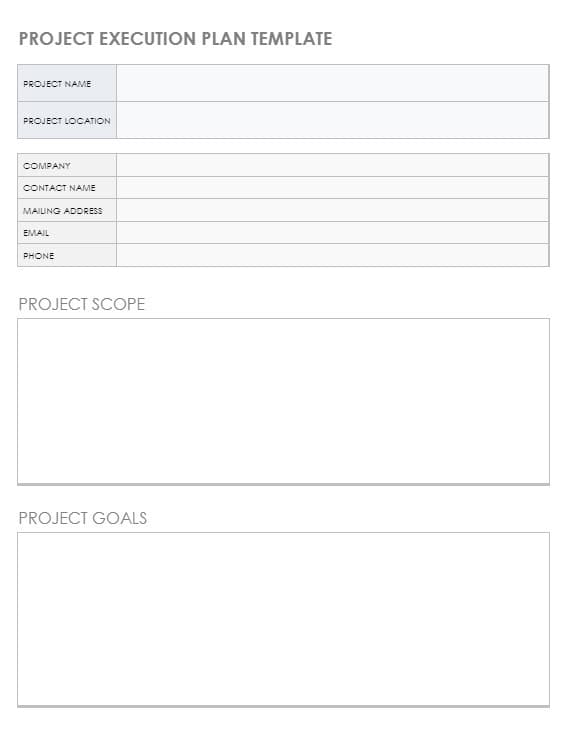
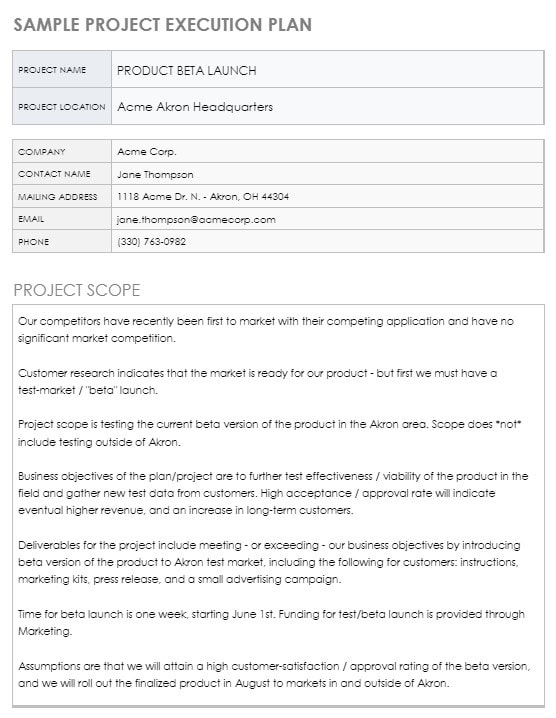
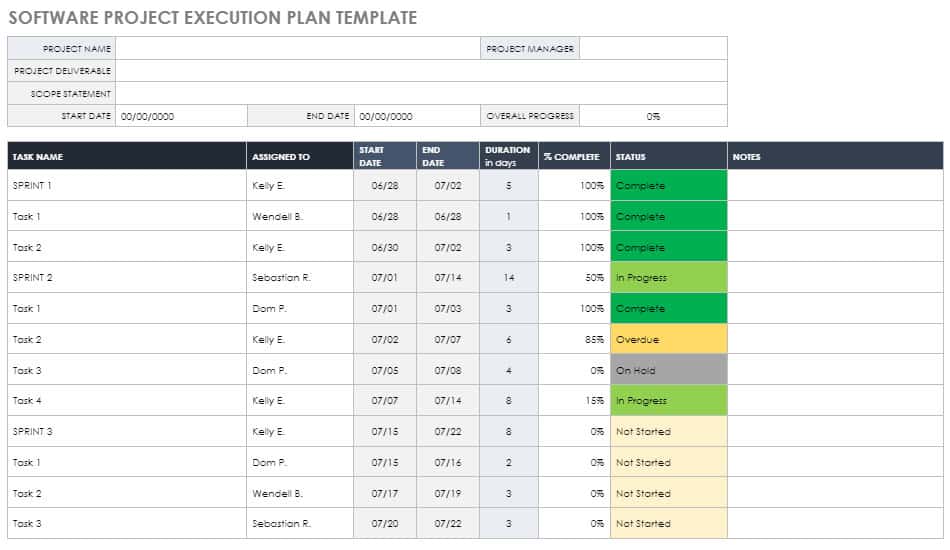
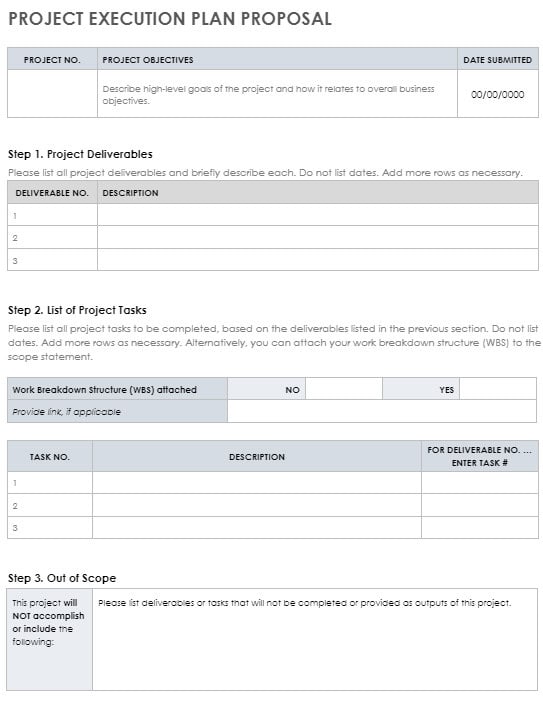
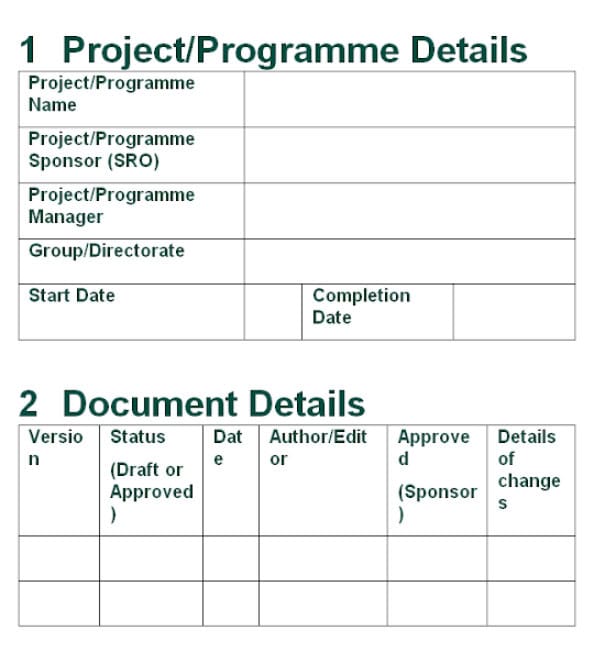
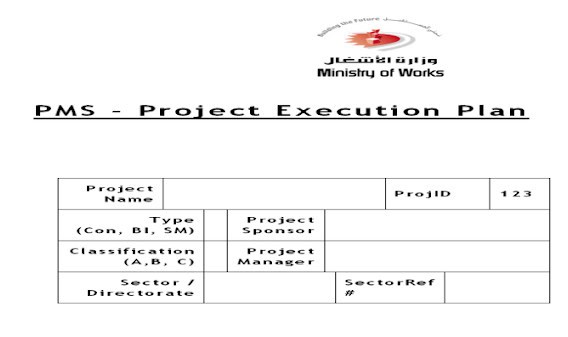
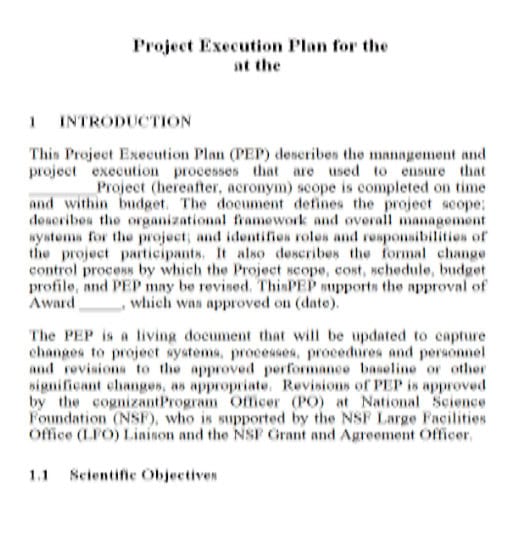
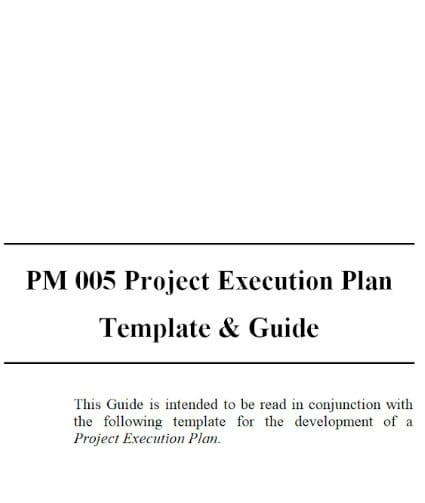
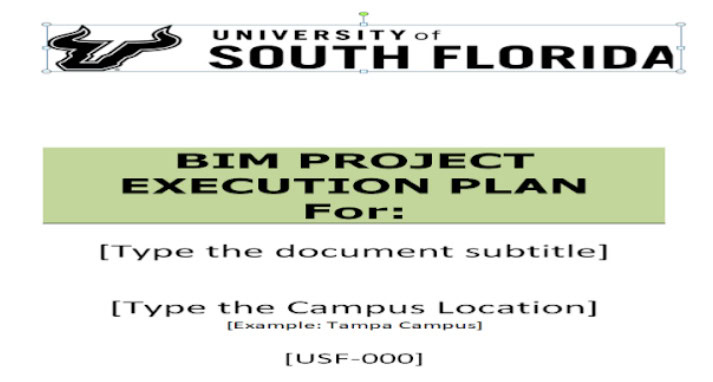
These templates often come with placeholders for key project details such as objectives, responsibilities, deliverables, and timelines, making them a flexible starting point for almost any industry.
Elements of a Project Execution Plan
Every project execution plan follows a similar framework, though the level of detail can vary based on project complexity. These elements are essential for providing a clear roadmap and ensuring accountability throughout the project lifecycle. They also serve as a central communication tool among project stakeholders and team members.
- Overview of the Project: Include general information like the project name, company, and stakeholders involved. This establishes a formal context for the plan and ensures the document is properly aligned with client or organizational requirements.
- Scope of the Project: This section should describe the work to be done, project features, and any inclusions or exclusions. Be specific to reduce misunderstandings and manage scope creep throughout the execution phase.
- Goals of Your Project: Lay out the intended outcomes, including delivery dates, quality expectations, and performance benchmarks. Clear goals provide motivation and act as a north star for your team.
- Quality Specifications: Describe the expected quality levels, performance criteria, and success metrics. These specs help ensure client satisfaction and define when the project can be considered complete.
- Technical Specifications: This includes infrastructure requirements, technology stacks, software configurations, and system reliability. Defining these early helps prevent delays caused by technical constraints.
- Resource Allocation: Detail the team structure, responsibilities, and resources allocated to the project. Include estimated hours, budget, and any third-party vendors or tools that are essential.
- Project Schedule: Provide a comprehensive timeline of tasks, milestones, and dependencies. This helps ensure that all parts of the project are progressing according to plan.
- Communication Plan: Define how you’ll report progress, conduct meetings, and escalate issues. A strong communication plan helps avoid confusion and ensures stakeholders stay informed.
Project Execution Plan Template – Excel
Excel is a favorite for project tracking because of its advanced functions, conditional formatting, and ability to visualize timelines with Gantt charts. These templates are especially useful for tracking metrics, dates, and budgets.

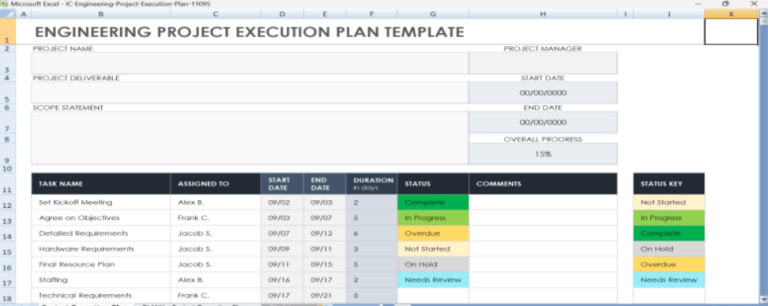


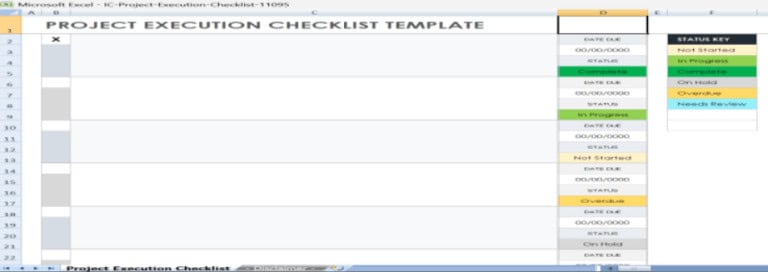
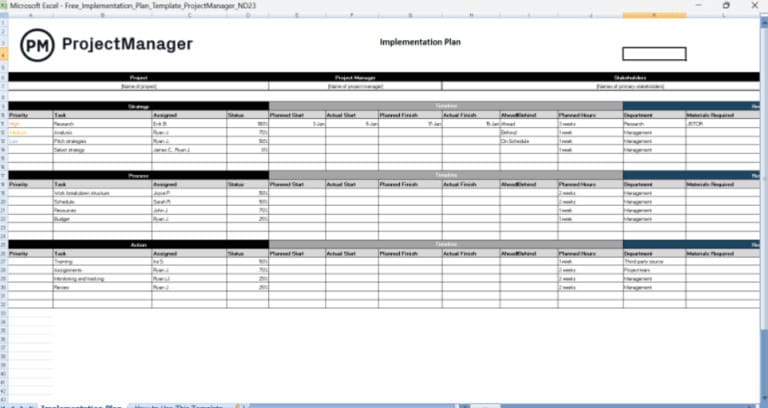

These Excel templates typically include built-in formulas and status indicators to help you manage real-time data and support ongoing decision-making.
How to Create a Project Execution Plan
Creating a project execution plan from scratch requires both strategic thinking and practical structure. You need to translate high-level objectives into tangible tasks and systems that can be easily followed. The process outlined below will help ensure no critical components are missed:
- Kickoff Meeting: Begin with a kickoff meeting to align expectations and define the execution roadmap. It’s a chance to share key milestones, timelines, and team responsibilities while opening the floor for clarifications or suggestions.
- Monitor and Control: Once your plan is in motion, use tools like project dashboards to track whether tasks are on schedule and within scope. Regular check-ins and audits can prevent small issues from becoming major setbacks.
- Real-Time Data: Make use of tools that provide real-time visibility into progress, budgets, and risks. This ensures your team can pivot quickly in response to changes and remain proactive instead of reactive.
- Signoff: Deliverables must be validated, documented, and approved before officially closing the project. Gathering stakeholder signoff is essential for transparency, auditing, and confirming that the project has met its objectives.
Project Execution Plan Template – PPT
PowerPoint templates are useful for presenting execution plans to stakeholders in a clear, visually engaging format. These templates can summarize key sections like project timelines, deliverables, and goals for presentations and executive briefings.

Project Execution Plan Template – PDF
PDF templates provide a fixed layout that’s easy to share and print, making them ideal for final documentation or official signoff. They are particularly helpful when submitting project plans to clients or regulatory bodies.
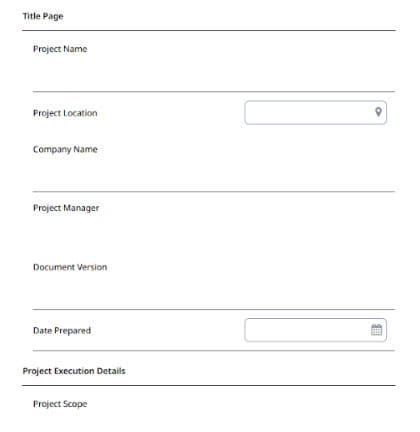
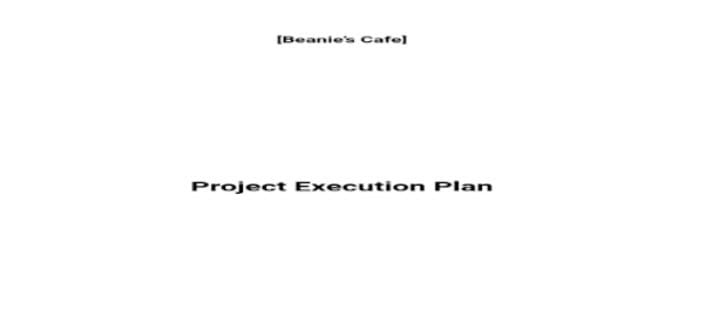




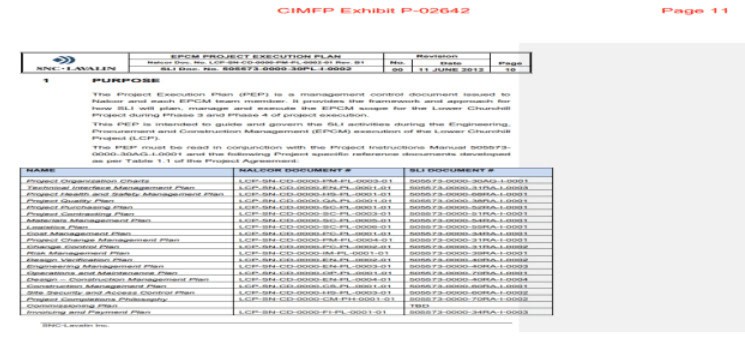
Project Execution Plan Template – Online Tools
Online tools like Creately and others offer collaborative, cloud-based PEP templates that teams can co-edit and track in real time. These platforms often come with version control, integrations, and visual boards that are useful for Agile and hybrid teams.
Creately
Creately’s project execution plan template helps teams visualize and collaborate on execution strategies. With drag-and-drop workflows and built-in project mapping features, it’s particularly effective for aligning cross-functional teams and visualizing dependencies.
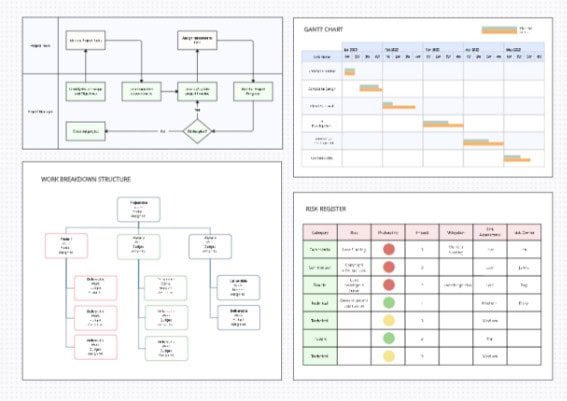
Project Execution Plan FAQs
Why Do You Need a Project Execution Plan?
A project execution plan is essential for aligning everyone involved in the project. It outlines who does what, when it’s due, how it’s tracked, and what success looks like. Without a structured plan, teams often fall into reactive chaos, leading to missed deadlines, unclear responsibilities, and unmet expectations.
Why Is the Execution Phase Important?
The execution phase brings your strategy to life. It’s where deliverables are created and progress is tracked. During this phase, potential risks or problems often emerge, so having a solid plan ensures your team can act swiftly and stay on course.
Is Execution as Important as Planning?
Both are critical, but execution is where real value is delivered. Planning sets the vision and strategy, but execution is the engine that drives results. A great plan without proper execution remains theoretical. The most successful projects balance both disciplines effectively.
What Is the Primary Focus of the Execution Phase?
The core focus of the execution phase is completing the work outlined in the project plan. This includes managing teams, overseeing quality, staying on budget, and delivering outcomes as promised. It’s about turning plans into deliverables.
How Often Should a Project Execution Plan Be Updated?
A PEP should be reviewed and updated regularly—especially after major milestones or project reviews. Agile or fast-moving projects may require weekly updates, while traditional projects may adjust monthly or by phase. The goal is to ensure the plan remains relevant and responsive to change.
Suggested articles:
- 8 Mandatory Metrics for Successful Project Execution
- Execution Phase Review Template for Project Managers
- Project Execution Template Kit
Shane Drumm, holding certifications in PMP®, PMI-ACP®, CSM, and LPM, is the author behind numerous articles featured here. Hailing from County Cork, Ireland, his expertise lies in implementing Agile methodologies with geographically dispersed teams for software development projects. In his leisure, he dedicates time to web development and Ironman triathlon training. Find out more about Shane on shanedrumm.com and please reach out and connect with Shane on LinkedIn.